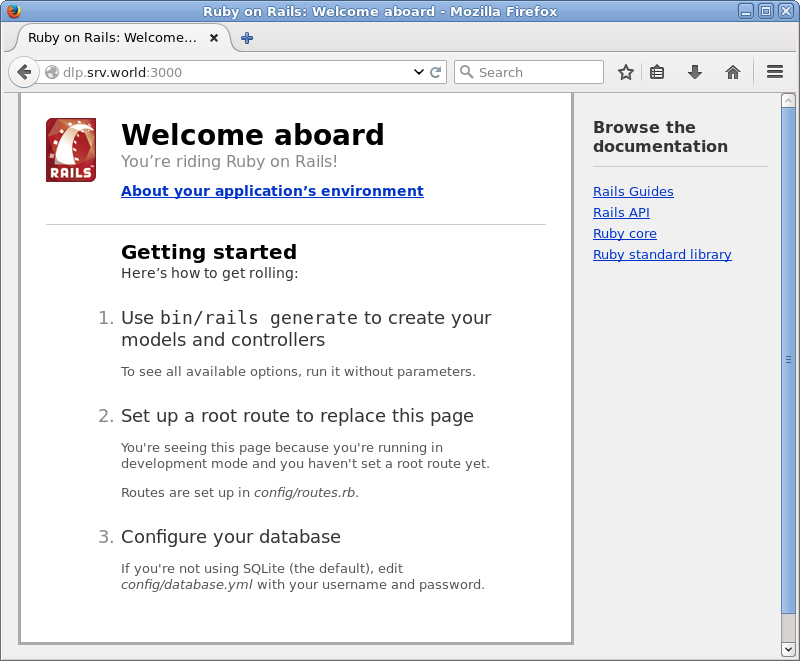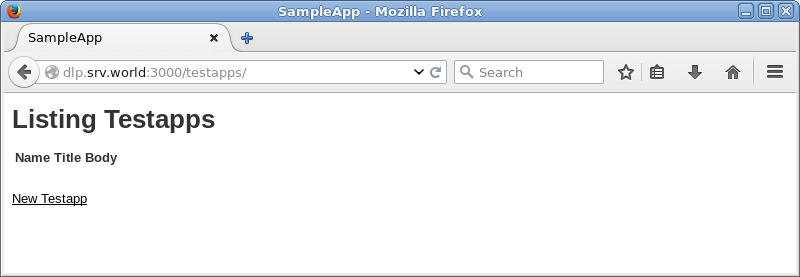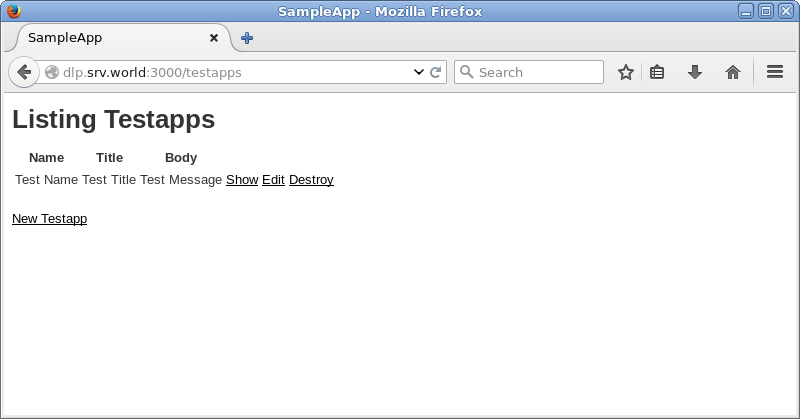|
Ruby on Rails 4
2016/07/03 |
|
Install Ruby on Rails 4 to build Ruby Framework environment.
|
|
| [1] | |
| [2] | Install some other required packages. |
|
[root@dlp ~]# yum --enablerepo=epel,centos-sclo-rh -y install rh-ruby22-ruby-devel nodejs libuv gcc make libxml2 libxml2-devel mariadb-devel zlib-devel libxslt-devel
|
| [3] | Install Rails 4. |
|
[root@dlp ~]# gem install bundler [root@dlp ~]# gem install nokogiri -- --use-system-libraries [root@dlp ~]# gem install rails --version="~>4.0" --no-ri --no-rdoc [root@dlp ~]# rails -v Rails 4.2.6 |
| [4] | Create a sample application and make sure it works normally. Install MariaDB Server first, refer to here. |
|
[root@dlp ~]# gem install mysql2 --no-ri --no-rdoc -- --with-mysql-config=/usr/bin/mysql_config [root@dlp ~]# rails new SampleApp -d mysql [root@dlp ~]# cd SampleApp
[root@dlp SampleApp]#
vi config/database.yml
default: &default
adapter: mysql2 encoding: utf8 pool: 5 username: root password: password # MariaDB password socket: /var/lib/mysql/mysql.sock # create test application [root@dlp SampleApp]# rake db:create [root@dlp SampleApp]# rails generate scaffold testapp name:string title:string body:text [root@dlp SampleApp]# rake db:migrate [root@dlp SampleApp]# rails server --binding=0.0.0.0 => Booting WEBrick => Rails 4.2.6 application starting in development on http://0.0.0.0:3000 => Run `rails server -h` for more startup options => Ctrl-C to shutdown server [2016-07-03 19:07:29] INFO WEBrick 1.3.1 [2016-07-03 19:07:29] INFO ruby 2.2.2 (2015-04-13) [x86_64-linux] [2016-07-03 19:07:29] INFO WEBrick::HTTPServer#start: pid=3225 port=3000 |
| [5] | Access to the "http://(server's hostname or IP address):3000/" from a client computer. It's OK if following site is displayed normally. |

|
| Access to "http://(server's hostname or IP address):3000/testapps/", then it's possbile to use sample app like follows. |

|

|

|

|